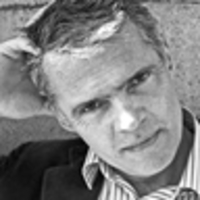You ain’t heard nothing yet. If you thought the admission by Barclays Bank that it manipulated the key interbank lending rate was shocking, be prepared for a series of larger jolts which could expose the banking system to its worst crisis yet.
It’s not just that other banks will soon be caught up in scandal. As Martin Tucker, the deputy governor of the Bank of England, confirmed to Parliament on Monday, several players were required to collude to fix the LIBOR and EURIBOR rate. Some of these have been alleged in various law suits (such as the seven banks currently being sued by Charles Schwab Company), while the U.S. Justice Department and Britain’s Financial Services Agency (FSA) are already investigating several more. In this sense, Barclays is just an early admitter, hoping for lesser fines and criminal charges in return for shopping the others.
Moreover, this price fixing is not just a recent phenomenon. Much of the politicized public spat last week in the U.K. concentrated on the period of 2008-09, when Barclays deliberately low-balled its rate to make it appear sustainable during the financial meltdown. But the price fixing has been recorded back as far as 2005 and The Economist reports these practices go back at least 15 years. The stakes are much higher than most people realise. Tiny daily movements in the LIBOR rates netted Barclays profits of $40 million a day, but not because loans were more or less expensive, but because they determine the value of a raft of other financial products.
Think of it as a horse race, with the participants fixing the result of a photo finish race. The change in the cost of borrowing is just the prize money for your winner. But the real money to be made is on the side bets.

Here’s the scale of the difference between the rewards at stake. The loan market (the prize money if you like) determined by the LIBOR rate, is worth some 10 trillion dollars annually. But the betting market, the various “over the counter derivatives” that depend on LIBOR, is a hundred times bigger at least. As the FSA pointed out in its document on the Barclays scandal, just one contract based on the rate traded out of Chicago was worth a staggering volume of $564 trillion U.S. dollars in 2011.
LIBOR is not the only horse race in town, not by a long shot. Other key markets in sovereign debt, exchange rates, commodity or energy futures, are also subject to trillions of dollars in speculative swaps, and this is where the price fixing just scandal could really go global.
No one knows where the next unexpected ‘black swan’ crisis will come from, except all eyes are turned to false reporting of indexes and the derivatives market. There have been rumors about oil price fixing for decades, as well speculation about silver and Brent crude. A decade ago, the U.S. Commodity Futures Trading Commission found that the practice of false reporting and price manipulation was rife but mostly “beyond the reach of any other federal financial regulator.” As a former securities regulator pointed out to The Daily Beast, “The mechanism for fraud through quotation manipulation was the same as Libor.”
So opaque and complex are many of these bets and derivatives that they are not only beyond the comprehension of the general public, but also many regulators, and even the banks’ risk and compliance officers. As a current FSA inspector told The Guardian, "The real threat is not a bank's management hiding things from us; it's the management not knowing themselves.” As an example from the last two months, the positions of just one trader in its Central Investment Office, Bruno Iskil (AKA the “London Whale”), has cost J.P. Morgan $5 billion this quarter, with an additional $39 wiped off the bank’s share value.
Paradoxically, current attempts to clean up the shadow banking system could actually make things worse. The G-20 countries are determined to force derivatives into central clearing houses where they can be properly valued. “But there is no good way to police whether derivative or other synthetic instruments are being priced or not,” a former central banker told The Daily Beast. “These valuations are then the basis for a margin call that can move real money from losers to gainers,” he says. “And the power to margin is the power to destroy.”
In short, the crisis of confidence triggered by the LIBOR scandal could soon spread to many parts of the global banking system. And even in their existential crisis, there’s nothing to stop the banks banking on their own demise.






